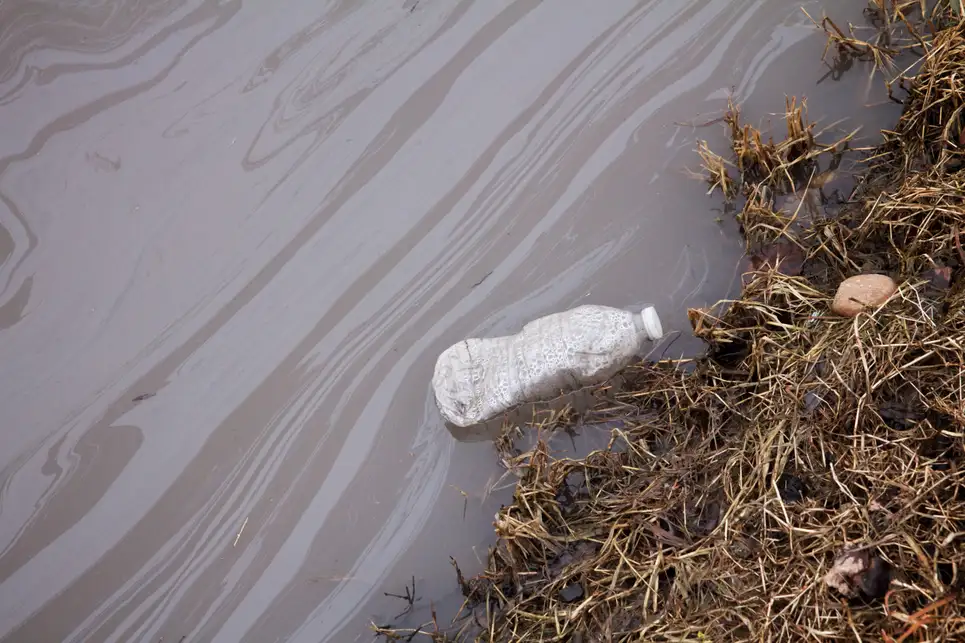Chemists Found a Way to Break Down Dangerous ‘Forever Chemicals’
They’re everywhere. In the air you breathe, the water you drink, and the soil we grow our food in—decades of industrial and commercial production and use have left basically no corner of our lives untouched by PFAS (polyfluoroalkyl substances), commonly called ‘forever chemicals.’ The two most important things to know about these chemicals: They’re toxic, and they don’t degrade over time on their own. Instead, they accumulate in our environments and in our bodies.
它们无处不在。在几十年的工业和商业生产和使用中,我们呼吸的空气、饮用的水和种植食物的土壤基本上没有一个角落不受PFA(多氟烷基物质)的影响,通常称为“永久化学品”。关于这些化学物质,最重要的两件事是:它们是有毒的,而且它们不会随着时间的推移自行降解。相反,它们在我们的环境和身体中积累。
But a newly discovered chemical mechanism could help in the fight against mounting PFAS pollution. Chemists have found a way to break down some types of these chemicals into harmless, component parts using inexpensive and common tools. The new research, published today in the journal Science, is a big step forward in our understanding of how these compounds react. And though we’re still a long way from solving the problem, we’re just a little bit closer to a healthier world.
但新发现的化学机制可能有助于对抗日益严重的全氟辛烷磺酸污染。化学家已经找到了一种方法,可以使用廉价和常用的工具将这些化学物质分解成无害的组成部分。这项新的研究发表在今天的《科学》杂志上,是我们在理解这些化合物如何反应方面迈出的一大步。尽管我们离解决这个问题还有很长的路要走,但我们离一个更健康的世界只有一点点的距离。
Why PFAS Are So Dangerous?
为什么PFA如此危险?
PFAS are chemicals with a lot of different uses (food packaging, fire fighting foams, nonstick cookware, furniture, cosmetics, etc…). Their main draw is that they’re super good at repelling water, oil, and grease, and even at tamping out fires. They do all this by being super-duper non-reactive. PFAS are made up of highly stable molecules that basically just stick to themselves.
PFA是多种用途的化学品(食品包装、消防泡沫、不粘炊具、家具、化妆品等)。他们的主要吸引力在于他们非常善于防水、防油和防油,甚至能扑灭火灾。他们都是通过超级双工无反应来完成这一切的。PFA由高度稳定的分子组成,基本上只粘在自己身上。
When they leach into the environment and enter our bodies, our systems have no way of getting rid of them. So, they pile up and cause problems. Research has found links between PFAS and multiple types of cancer, immune system problems, high cholesterol, liver disease, and issues with pregnancy and infant development. (Because of all these health effects, the EPA announced new limits on PFAS in drinking water in June, advising that safe water supplies should basically contain no detectable PFAS.)
当它们渗入环境并进入我们的身体时,我们的系统无法摆脱它们。因此,它们会堆积起来并引起问题。研究发现PFA与多种癌症、免疫系统问题、高胆固醇、肝脏疾病以及妊娠和婴儿发育问题之间存在联系。(由于所有这些健康影响,环保署在6月份宣布了饮用水中PFA的新限制标准,建议安全供水基本上不应含有可检测的PFA。)
Yet they’re very difficult, nigh impossible, to avoid. PFAS have been detected in drinking water across the U.S., both indoor and outdoor air, farm fields worldwide, fish, cosmetics, and elsewhere.
然而,它们很难,几乎不可能避免。在美国的饮用水中、室内和室外的空气、世界各地的农田、鱼类、化妆品和其他地方都检测到了PFA。
Even with lots of human effort, these forever chemicals have proven incredibly difficult to break down. Incineration doesn’t seem to work. Lots of strategies can lead to other toxic byproducts. And many methods can be cost-prohibitive, limited, or hard to scale up—like heating water containing PFAS to super high temperatures.
即使经过大量的人类努力,这些永久性的化学物质已经证明难以分解。焚化似乎不起作用。许多策略可能会导致其他有毒副产品。许多方法可能成本过高、有限或难以扩大,例如将含有PFA的水加热到超高温。
What’s New About This Method?
这项方法有什么新的处理方式?
“It think it’s fair to say that all other emerging PFAS degradation methods are things that you would classify as very high energy [or] relatively exotic conditions,” said William Dichtel, a chemist at Northwestern University and one of the study researchers, in a press briefing on Tuesday. “That’s really what differentiates our finding from from from everything else that that’s out there,” he added— emphasizing the accessibility and relative ease of the new method.
西北大学化学家、研究人员之一威廉·迪克特尔在周二的新闻发布会上说:“我认为,可以公平地说,所有其他正在出现的全氟辛烷磺酸降解方法都属于高能(或)相对奇异的条件。”。“这正是我们的发现与其他所有发现的区别,”他补充道,强调了新方法的可进行性和相对容易性。
Using just a little bit of heat and supplies that can be found in high school chemistry labs (sodium hydroxide, i.e. lye, and a solvent called DMSO), the researchers were able to take one type of concentrated PFAS and break it up into smaller, non-toxic compounds.
利用高中化学实验室中可以找到的少量热量和供给(氢氧化钠,即碱液和一种称为DMSO的溶剂),研究人员能够提取一种浓缩的PFA,并将其分解成更小、无毒的化合物。
“Most chemists are taking two molecules and squishing them together to make one big molecule, like taking two Legos and putting them together,” explained Brittany Trang, who was the study’s lead researcher and completed her PhD at Northwestern University last month, in the press briefing. “But instead, what we were doing is smashing the Lego to bits and looking at what was left to figure out how it fell apart.”
“大多数化学家将两个分子挤压在一起形成一个大分子,就像将两个乐高积木拼在一起一样,”该研究的首席研究员、上个月在西北大学完成博士学位的布列塔尼·佩奇在新闻发布会上解释说。“相反,我们所做的是把乐高砸成碎片,看看剩下的东西,找出它是怎么散开的。”
And that second step is important. Not only did the chemists successfully degrade the PFAS, but they used quantum mechanical models to figure out exactly how it happened and to provide a road map for others to use in related research.
第二步很重要。化学家不仅成功地降解了PFA,而且他们还使用量子力学模型精确地计算了它是如何发生的,并为其他人提供了一个路线图,用于相关研究。
Which Diana Aga, an analytical chemist and PFAS researcher at the University of Buffalo who was uninvolved in the new study, told Gizmodo she was especially grateful for. “I appreciate everything that this publication has done in terms of detailed analysis and comprehensiveness.”
戴安娜·阿加是布法罗大学(University of Buffalo)的分析化学家和PFAS研究员,她没有参与这项新的研究,她告诉Gizmodo她对此特别感激。“我感谢这份出版物在详细分析和全面性方面所做的一切。”
To smash the Legos apart, Trang and her co-researchers heated their PFAS, lye, and DMSO solution at temperatures between 80 and 120 degrees Celsius (176 and 248 Fahrenheit). After four hours, nearly 80% of the PFAS was gone, and after 12 hours, more than 90% of it disappeared—replaced by benign carbon byproducts like oxalate, which is in many of the vegetables we eat, or glycolic acid, which is commonly used in skincare products.
为了粉碎乐高积木,Trang和她的同事们将全氟辛烷磺酸、碱液和二甲基亚砜溶液加热到80-120摄氏度(176-248华氏度)。4小时后,近80%的PFA消失了,12小时后,90%以上的PFA都消失了,取而代之的是良性碳副产品,如草酸,我们吃的许多蔬菜中都含有草酸,或通常用于护肤品的乙醇酸。
Characterizing those byproducts is a big deal as well, Aga said. It’s a thorough step that helps ensure more environmental harm won’t come from trying to tackle the issue (which has happened before with PFAS). “This study is beautiful, because they did that,” she added.
阿加说,描述这些副产品也是一件大事。这是一个彻底的步骤,有助于确保解决这一问题不会带来更多的环境危害(PFA之前就发生过这种情况)。“这项研究很漂亮,因为他们做到了,”她补充道。
Read more at Gizmodo.com
在Gizmodo.com阅读更多











